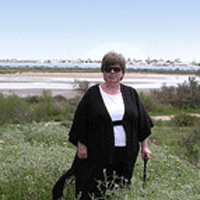 Thriving after Your Stroke – What Motivated You?
Thriving after Your Stroke – What Motivated You?
Toronto, Ontario resident Marilyn Sherman was 52 years old when she had her stroke just over seven years ago. She was being driven home from work and noticed when getting out of the car that her right leg didn’t seem to be supporting her properly. Even though she had worked as a nurse for over 30 years, like so many, she downplayed her symptoms, and it wasn’t until her speech began to slur that she went to the hospital. Her stroke extended overnight, and when she woke up the next morning, she was completely paralyzed on her right side.
Marilyn spent over a week in the hospital and three months in in-patient rehabilitation. When she was discharged she was using a quad cane, she now only uses a single-point cane when going for longer walks.
Like many survivors, even having been a healthcare practitioner her entire career, Marilyn found her initial experiences in the hospital setting and rehabilitation discouraging. It wasn’t until she began tertiary, out-patient therapy that she began to perk up and feel hopeful that she could recover and still enjoy a full, meaningful life after her stroke.
Marilyn was pursuing her Masters Degree in Occupational Health before her stroke and although she could not continue her studies, she wanted to use her expertise in the healthcare field to support fellow survivors. As a result, she began working with the peer support stroke recovery group at her rehab centre. Marilyn wanted to demonstrate to others first hand how far she had come after her stroke, and to offer hope and support.
"I tell people they need to let go of their anger and to try not to dwell on what’s difficult – and I know how hard that can be – I dealt with frustration and depression after my stroke – I never claim it’s easy, it’s not, it’s very hard work and you have to be so determined,” says Marilyn. "But I know how important it is to get the proper medical support, work with your caregivers and not rely on them – and focus on the positive, incorporating these things into your daily life truly makes the difference."
As part of her work with her peer support group, Marilyn was constantly searching for articles, resources and information that could be beneficial to her members. She wanted to share what she found more broadly, and so started a blog where she could post what she learned. She has been running
http://thestrokethrivers.blogspot.ca/ since 2010, and has been able to reach over 35,000 people worldwide.
"The site is not a typical blog in that I don’t share my opinions often– I do love to write, but the site is a really a depository for information and a forum for others to share their thoughts and stories. Through the site I can reach people one-on-one that I might not be able to meet in person because of distance or geography – and they can connect with others as well," she says.
In addition to her blog, Marilyn is volunteering with Transition Improvement for Continuity of Care, or TICC, a collaboration of the Ontario Stroke System, North & East GTA Stroke Network, South East Toronto Stroke Network, Toronto West Stroke Network and March of Dimes Canada. TICC is working to improve the continuum of care for stroke survivors in the Greater Toronto Area, and Marilyn is working to include peer support as part of the continuum and to implement a more holistic approach to stroke recovery.
Marilyn finds her stroke recovery motivation in her volunteer work, blog and peer support group.
"Stroke recovery is hard, there is no doubt about that," Marilyn says. “There will be bumps in the road, physical and emotional challenges, you might find you backslide and it is a fight – but I urge people never to give up – the rewards are so great when you tell yourself, ‘yes I can do it’ – it does get better."
